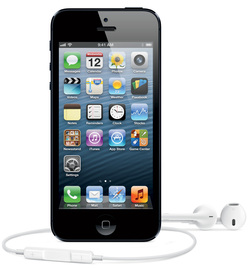 In most people's pockets there lies decades worth of technology in one single device. Smart phones, such as the iPhone and Samsung Galaxy series have revolutionized the way we communicate with each other, and have forever shifted the educational landscape. Students no longer need to visit a library or open a book to find the capital city of Norway or the formula for the area of a circle. With just a few clicks or taps the answers are on a screen right in front of their eyes.
People today can now record videos, take pictures, send media, phone, text, tweet, Skype and blog all from one device. This convergence of technology has also made of these actions mobile as well. No longer do people need to be hardwired to dial-up Internet. Now, people can send messages whether they are in their backyard or sitting in the park. Mlot (2013) explains by the end of 2013 an estimated 1.82 billion smartphones are expected to be in use. In addition to smartphone, other mobile devices are frequently used. Here is an infographic that highlights the iPad:
So what does this mean for education, and how can mobile technology be utilized in the classroom? Much of the current education system is still based on the idea of the industrial model. However, the means by which students can learn has changed dramatically during the century, but the education system itself hasn't followed suit as quickly. In terms of content, efforts are being made to educate students more about technology. However, I think more emphasis needs to be placed on including real-world content into the curriculum in order to engage students, and prepare them for life after graduation. The way in which this content is delivered is also important. The methods and practices of the current education system needs to be more complimentary with respect to technology. Students today use Mobile Internet Devices (MIDs) more than any other generation in history. Therefore, why not embrace this, and use it to further learning? Nielsen (2013) points out that using mobile technology in the classroom can inspire and engage students by letting them lead their learning and supporting them in choosing and using the devices they know, love, and prefer ("Finally! Research-based proof that students use cell phones for LEARNING"). If students are more comfortable reading from a computer screen rather than a textbook then why not utilize that technology ? However, there are things to consider at both the classroom and administration level?
For example, issues surrounding acceptable use need to be addressed. MIDs have the potential to be used for watching videos or playing games. Therefore, it is important to consider that students may not always be on task. Furthermore, there are issues concerning equal access to technology. Students from lower socio-economic statues may not have the ability to purchase a smartphone, and their education should not be compromised because of it. However, this can be mitigated by having a class set of iPads or having students share devices. MIDs can strengthen learning in a variety of ways. Wylie (2013) argues that MID can make learning more flexible, they are easy to use, provide access to education apps, enrich learning, and engage and motivate students. However, it is important for teachers to introduce these devices into the classroom within an educational framework. THIS ARTICLE by Monica Burns offers different ways that mobile technology can be introduced into the classroom. If teachers demonstrate ways that they can be used to further learning, and explain that within the classroom education is the goal, then I think they can be great tools. The ways in which MIDs are applied to edcuation can change the nature of learning in a number of ways. For instance, they can be used by students to create and present projects, as well as research information. They can also be a way for students to communicate with teachers, rather than face-to-face conversations. Overall, the implications of MID are vast. Learning at any place and any time means that the boundaries of the classroom are virtually extinguished. Education is an ongoing process, and MIDs help to perpetuate this notion. Now, learning can happen at any time, virtually anywhere. I think this may blur the lines between formal and informal education. However, I believe any time and place learning is a positive trend because it promotes education and literacy, and opens many doors to knowledge. References
Fig. 1. iphone5.jpg. Retrieved on July 19, 2013. From http://0.tqn.com/d/ipod/1/0/P/O/-/-/iphone-5.jpg
Fig. 2. ipad_infographic.jpg. Retrieved on July 19, 2013. From http://dailyinfographic.com/wp-content/uploads/2012/03/ipad_infographic.jpgBurns, Monica. (2013, April 10). "Introducing Mobile Technology into Your Classroom: Structures and Routines." Retrieved from http://www.edutopia.org/blog/introducing-mobile-tech-structures-routines-monica-burns
Mlot, Stephanie. (2013, March 27). "Infographic: Mobile Devices Overtake Daily Life." Retrieved from http://www.pcmag.com/article2/0,2817,2416976,00.aspNielsen, Lisa. (2013, February 16). "Finally! Research-based proof that students use cell phones for LEARNING." Retrieved from http://theinnovativeeducator.blogspot.ca/2013/02/finally-research-based-proof-that.htmlWylie, Johnathan. (2013). "Mobile Learning Technologies for 21st Century Classrooms."Retrieved from http://www.scholastic.com/browse/article.jsp?id=3754742Significant Comments:
http://ed4764blog.weebly.com/1/post/2013/07/topis-10-convergence-and-mobility.html#comments
http://ed4764muirhead.weebly.com/1/post/2013/07/mobile-devices-in-the-classroom.html#comments
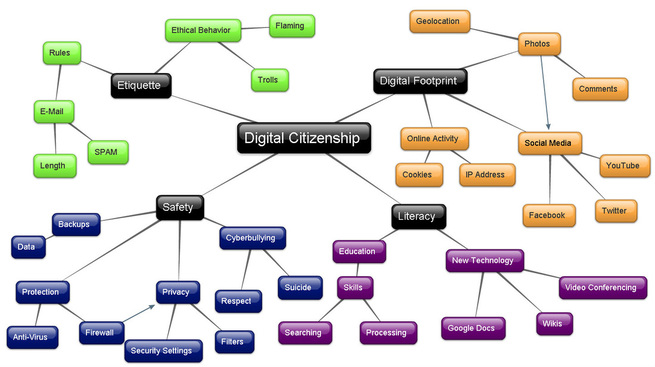
Digital Citizenship is a term that has many concepts associated with it. The concept map above shows just how many ideas can spawn from this one term. Ribble (2013) defines digital citizenship as the appropriate and responsible use of technology. Although this seems like a fairly simple definition, it is a very important one for students to understand and demonstrate. Similarly, Heick (2013) defines it as "[t]he quality of habits, actions, and consumption patterns that impact the ecology of digital content and communities" ("The Definition of Digital Citizenship").
For me, digital citizenship involves a blend of both guidelines, etiquette, safety as well as literacy and education. It means being smart of the use of technology, and avoiding behavior that will cause problems for you or others. I think it is important to educate students at an early age about digital citizenship so that they will have this knowledge for the duration of their school years. For instance, in upper elementary or early middle school would be a good time to introduce students to the intricacies of digital citizenship. At this age students are becoming more social, starting to transition from childhood to adolescence, and exploring the world around them in different,. more independent, ways. I think at this stage is is important to focus primarily on technology etiquette and the concept of a digital footprint. Students at this age should be educated about what constitutes appropriate etiquette, because it is likely they will be actively participating in online activities, whether at home or in school. For example, providing an overview rules for e-mailing will help students when they are communicating with others. Additionally, knowing what digital footprint they are leaving behind is important for students to understand. If they are aware of what their digital footprint is then they are more likely to be responsible users. For more information, THIS SITE from Microsoft offers valuable information regarding digital citizenship. It includes tips for educators, infographics, as well as fact sheets. THIS LINK has videos about digital citizenship that can be shown to students. In conclusion, digital citizenship is a BIG topic that often generates more questions than answers. With an ever increasing online world practicing the fundamentals of digital citizenship is becoming more and more important. References
Fig. 1. 9708873_orig.jpg. Retrieved on July 19, 2013. From http://joshuamorales.weebly.com/digital-citizenship.htmlFig. 2. digital-citizenship.jpg. Retrieved on July 19, 2013. From http://www.teachthought.com/wp-content/uploads/2013/04/digital-citizenship.jpg
Heick, Terry. (2013, May 2). The Definition of Digital Citizenship. Retrieved from
http://www.teachthought.com/technology/the-definition-of-digital-citzenship/
Microsoft. (2013). Safety and Security Center. "What does digital citizenship mean to you?" Retrieved from http://www.microsoft.com/security/resources/digital-citizenship.aspx
Ribble, Mike. (2013). Digital Citizenship: Using Technology Appropriately. Retrieved from http://www.digitalcitizenship.net/Significant Comments:
http://joansjournal.weebly.com/1/post/2013/07/topic-9-web-awareness-ii.html#comments
http://aroseduc4764.weebly.com/1/post/2013/07/web-awareness-ii.html#comments
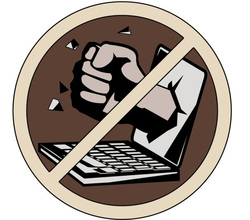 The Internet is an enormous network that has tremendous possibilities, but also many potential dangers. The website Be Web Aware (2013) states that the use of the Internet has led to a new world of social communications which includes, e-mail, web pages and instant messaging that are used to talk with friends and make new ones. Because of this ease of access to information-especially that of a personal nature-it is vital for students to be aware of what exactly goes on in the World Wide Web. Youth today face a new set of challenges because of the Internet, so it is important they are educated in a way to keep them out of harm's way. Character education is one method that deserves attention. According to Alberta Education (2013) character education is defined as " a deliberate effort to encourage ethical behaviours and personal qualities that our society values, such as respect, responsibility, fairness, empathy and self-discipline" (Alberta Edcuation, 2013, "Overview"). This definition can be directly applied to the online world as well, and has just as much, or even more, significance for students. As teachers I believe it is highly important to help develop our students as people, as well as learners. Dates, historical figures, formulas , scientific principles, short stories and equations are often forgotten by students after they have left school, but their character is something that will always be a part of them. Therefore, I believe it is vital for teachers to not only model behaviors expected by students, but also to promote a high level of character education.
The Josephson Institute of Ethics (2013) outlines six pillars of education, which include:
- Trustworthiness
- Respect
- Responsibility
- Fairness
- Caring
- Citizenship
I think these six areas serve as a solid framework for promoting the ideals of character education. Although they are somewhat open-ended, there are many ways to demonstrate and promote these pillars within the classroom. With respect to cell-phone use in the classroom, I think if teachers use them, students should be allowed to as well. However, it is contingent on when and how it is being used. Similarly, checking personal email or surfing web pages should be done during personal, and not class time. I think if teachers model this kind of behavior for their students, they will serve as examples about how to use technology appropriately within the classroom. The next topic for discussion focuses more on school or division-wide policy rather than classroom specific actions. Web filters are often used to control the type of web pages users can and cannot visit. However, this policy has raised a host of issues and has people agreeing with, or disagreeing with, its use. Personally, I find web filters an ineffective way to control the content users will view at school. Watters (2011) points out that too much filtering can cause problems for both students and teachers, because it blocks them from retrieving educational content from websites that a filter may deem inappropriate. In addition, many crafty students find ways around the filters and get to the content they want to see anyways. Once they figure out how to maneuver around the filter they can tell others, and then the entire aim of the filter is compromised. As an alternative, I would recommend that schools or divisions set up a type of digital citizenship passport. If students are caught viewing sites they shouldn't be on, or involved in inappropriate activity, then they will lose some of their privileges. However, if they use the Internet for things they are supposed to be doing then nothing will be filtered for them. However, there are also potential risks associated with this method as well, such as students sharing their log-ins with each other. Nevertheless, it may deter some students from viewing content they shouldn't be and enhance the browsing experience for those who use the Internet responsibly. Ultimately, it is up to students themselves to decide their level of web awareness. Teachers can educate students as much as possible, but it up to students themselves to use this information to their benefit. However, it is a topic that will continue to be important as long as the pervasiveness of the Internet continues to influence education circles. ReferencesFig. 1. No-to-Cyberbullying.jpg. Retrieved on July 19, 2013. From http://socialmediachimps.com/wp-content/uploads/2012/04/No-to-Cyberbullying.jpgAlberta Education. (2013). The Heart of the Matter: Character and Citizenship Education in Alberta Schools. "Overview." Retrieved from http://www.education.gov.ab.ca/charactered/overview.aspBe Web Aware. (2013). "Cyberbully." Retrieved from http://www.bewebaware.ca/english/cyberbullying.htmlThe Josephson Institute of Ethics. (2013). "Six Pillars of Character." Retrieved from http://josephsoninstitute.org/sixpillars.htmlWatters, Audrey. (2001, October 10). "Can Google Challenge Over-Zealous Web Filtering at Schools?" Retrieved from http://hackeducation.com/2011/10/10/can-google-help-challenge-over-zealous-web-filtering-at-schools/Significant Comments: http://jillianmacdonald.wordpress.com/2013/07/21/topic-8-web-awareness-i/#respondhttp://jenseducationportfolio.weebly.com/3/post/2013/07/topic-8-web-awareness-i.html#comments
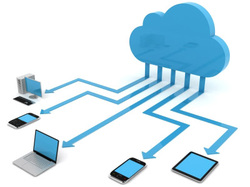 The concept of collaboration is not new. For centuries people have consulted each other and brought ideas together for a common purpose. However, what has changed is the way in which it is being done. Today, people located at different parts on the globe are able to meet online and share ideas in real time. This has opened many doors within the realm of education to both students and teachers. Services such as: AgreeAdate, TimeToMeet, ActiveCollab, Zoho Chat, PageShare, Skype, Textflow and Yammer are all examples of online collaboration tools. Because of the vast number of available tools, it is important for teachers to carefully select which ones are best suited for their classroom. Dropbox is a popular application for cloud storage and file sharing, and one that I personally use frequently. One of the benefits of Dropbox is that, once files are uploaded, they can be remotely accessed from computers, as well as mobile devices. Booker (2013) notes how Dropbox offers four great features, which include: sharing stores files, overcoming email limitations, turning in homework, and easy saves from popular apps. With Dropbox, files can be sent to people with the click of a button and shared folders can be created with ease. In addition, Dropbox offers 2GB of initial storage space, which is significantly more than Uleth's webmail service (50 MB). Furthermore, Booker (2013) explains how Dropbox is great for homework, because teachers can share assignments with students, and students can hand in their work, which includes a time-stamp feature. Lastly, Booker (2013) notes that many popular apps, such as Evernote, offer a Dropbox "sync" option that makes saving documents simple and easy.
I think Dropbox has a number of benefits that make it an ideal application for the classroom. It's simplicity, size and functionality allow for easy collaboration and file sharing. THIS ARTICLE by Jennifer Carey (2012) outlines ways to use Dropbox with students with step-by-step instructions, and even includes screenshots of the process.
Google Drive is another application that focuses on collaboration. It can be a powerful tool within the classroom because of its many features and possibilities. For instance, Google Drive allows students to simultaneously work on a Word document or PowerPoint from different computers. Although there are some concerns about using Google Drive and privacy, the potential benefits of using Google Drive outweigh the risks. One of the ways Google Drive can be implemented within the classroom is through Word document collaboration. For example, in a Language Arts class multiple students can team up to write a short story or poem together. Similarly, in a Math class students can view the same spreadsheet and make changes to it together. In Social Studies or Science, Google Drive allows multiple users to work on the same presentation. My experience with Google Drive in the past has been a positive one. In a few of my Education classes I have used it for writing documents with group members, as well as creating presentations. However, Google Drive offers possibilities that extend beyond just this. Google Drive can be used as a means for peer-assessment between students. Hardison (2012) describes how he used the features of Google Drive within his classroom, and includes a breakdown of his lessons within this article. Hardison (2012) explains how he used Google Forms as a place for students to give feedback, and Google Spreadsheet as a way for students to check submissions. Hardion's incorporation of Google Drive into his lessons highlights the many possibilities of this application. It is a multi-faceted tool that can pique student interest and extend their learning through non-traditional means. Another Google application that is gaining traction within academic circles is Google Hangout. Google Hangout offers a platform for teachers and students to engage in online communication and collaboration. The TeachThought staff offer 32 tips for using Google+ Hangouts in the classroom. Some of these tips include: monitoring comments, staying on topic, setting the length of the session, and being adequately prepared. Google Hangout also offers possibilities for students. Between students, Google Hangout can be used as a forum to talk about class and give feedback to one another. It can also serve as a place where students collaborate on projects or assignments. Between classrooms, Google Hangout can be used as a place where presentations are shared and ideas as discussed. Students could come up with a set of instructions beforehand and ask other classes what they are doing in theirs. In Science classes, Google Hangout can be a way in which classes share experiments with one another and share their findings. However, despite the possibilities of this application, there are also risks. One of the risks of Google Hangout is privacy. When users sign up to Google+ the settings on their profile set everything to public view. Unless users change their privacy settings everything they do will be accessible to public eyes. Another risk of using Google Hangout is operator error. Although it is not overly complicated, users need to be proficient at using the features of the application. It is for this reasons that I think Google Hangout is more appropriate for high school students. Online collaboration and independent learning is more of a quality that high school students possess, as opposed to elementary or junior high students. However, it could be used in an elementary setting if the whole class was involved, with the teaching leading. Similarly, it could be used in a middle schools or junior high class with more mature students, or as enrichment. However, regardless of the grade level it is important to inform parents because it is an online tool. I would send parents an email or letter letting them know the basics of Google Hangout, as well as its educational value. I would also set up a Google Hangout one evening for parents to join and try it out for themselves. This way they would be aware of what the application is all about, as well as its possibilities. The number of collaboration mediums reflect the countless possibilities that exist within the context of education. As cloud computing and collaboration continues to grow, so will the number of ways in which it can be used effectively. However, it is important to be selective in what applications are used, as well as how they are used within the classroom. If cloud computing and collaboration is used appropriately both teachers and students can benefit from the many features these applications have to offer. ReferencesFig.1. Collaboration-Cloud.jpg. Retrieved July 13, 2013. From http://activeco.com/wordpress/wp-content/uploads/2012/09/Collaboration-Cloud.jpgBooker, Ellis. (2013, April 3). Dropbox in the Classroom: 4 Great Uses. Retrieved from http://www.informationweek.com/education/admin-systems/dropbox-in-the-classroom-4-great-uses/240152140Carey, Jennifer. (2012, August 10). Using Dropbox in the Classroom. Retrieved from http://plpnetwork.com/2012/08/10/dropbox-a-superb-classroom-tool/Hardison, John. (2012, December 26). The Sidekick & the Superhero: Using Google Drive for Peer-Assessment. Retrieved from http://gettingsmart.com/2012/12/the-sidekick-the-superhero-using-google-drive-for-peer-assessment/
TeachThought Staff. (2012, October 18). 32 Tips for Using Google+ Hangouts in the Classroom. Retrieved from http://www.teachthought.com/technology/32-tips-for-using-google-hangouts-in-the-classroom/Significant Comments:
http://aroseduc4764.weebly.com/1/post/2013/07/the-internet-and-collaboration.html#comments
http://jillianmacdonald.wordpress.com/2013/07/17/topic-7-collaboration/#comments
 Because of the Internet, making information available to others can now be done with ease. Information and ideas can now taking on a variety of different forms. From infographics to digital storytelling, there is a wide variety of mediums where information can be published. This opens up a number of possibilities for the classroom as well. Promoting students to become web authors will move them from into the "creator" group within the context of the 90-9-1 Principle of Social Participation. Charles Arthur from The Guardian (2006) notes that finding users to build content on the web can be challenging. This is why it is important for teachers to educate students about how to interact with content online, as well as create their own. There are a number of tools that teachers have at their disposal, such as: Weebly, Wordpress, SchoolNotes, Audacity and YouTube. Allowing students to chose which application best serves their need appropriately is an important first step in web publishing. However, there are also several ways in which the teacher can model this for their students, with one method being WebQuests. According to Bernie Dodge, WebQuests are a form of inquiry based learning where users rely on the Internet as a source of information. They offer a great way for students to work independently or in groups. The Educational Broadcasting Corporation outlines (2012) six essential ingredients to an effective WebQuest, which include: - Introduction
- Task
- Process
- Resources
- Evaluation
- Conclusion
These different sections of the WebQuest chunk important pieces of information together, and make the assignment for manageable for students. In addition, they are logically organized, which should alleviate any potential problems or troubles for students. A more detailed explanation of these six components can be found HERE. In the past I've used WebQuests, and have found them to be an effective educational tool. The WebQuest assignment had the highest completion rate in my Social 10-1 and 10-2 classes. While the students were working in the computer lab virtually everyone was engaged in their work. After reading more about WebQuests in this topic, and from the posted articles, I think they are something I will try to use more of in the future. Infographics are another form of web publishing that I tend to use in my lessons. They convey data in a visually appealing way. Rather than spreadsheets and 2-D. black and white graphs, infographics use colors, pictures, diagrams, logos and eye-catching visuals to turn the ordinary into an interesting representation. Ashley MacQuarrie (2012) explains how infographics can spark conversation, introduce new topics, serve as starting points for research, and give students practice at reading charts and interpreting data. MacQuarrie's site also offers a number of websites where teachers can find infographics, and where students can create their own. Having students create their own requires them to employ a number of important skills. For example, they will need to research, organize and synthesize information, visually present information, and maybe even collaborate with others. Here is an example of an infographic that could be used in Social Studies:
Digital storytelling is another method students can use to communicate information. This involves a combination of creativity, research, narration and visuals. Ferrington (2011) argues that, in general, sharing stories and experiences is a fundamental part about being human, and that digital storytelling can be conceptualized as an extension of the ancient practice of storytelling but infused and enhanced with images and sound. I think that this last idea is key. Contemporary students are so accustomed to being surrounded with external stimuli that incorporating images and different sounds into a story seems to make sense. They use social media on a daily basis, and are able to use channels such as Twitter, Instagram and Vine which include aspects of digital storytelling. Therefore, I find that digital storytelling in the classroom has a very relevant and practical purpose. Not only does it give students a voice, but it is also something they are already very familiar with. Another way education is changing is through the flipped classroom. The flipped classroom is a innovative way of thinking, made possible through the Internet. This method is unique because students are able to familiarize themselves with the basic content before they even enter the classroom because of streaming media mediums. There are many who support the idea of a flipped classroom, but also a number who oppose it. Personally, I can see value in the flipped classroom. However, despite this it also has certain drawbacks. For instance, . Overall, I don't think I would use flip teaching for a number of reasons. Firstly, in flip teaching often the students are passively watching a video, or listening to audio, without the ability to ask immediate questions. One of the most important pieces to instruction is a dialogue between students and teachers. In the flipped classroom this only happens after the learning has taken place, but not during it. Secondly, the flipped classroom is predicated on the belief that each student has the ability to access the content. However, this is not always the case. Students who are living in a low socio-economic environment, or work outside of school may not have the means or the time. Lastly, it fails to recognize the different learning styles that students possess. Hertz (2012) notes that sitting in front of a computer screen is not how everyone learns best. Nevertheless, flipped teaching is something that will be sticking around because of the accessibility of steaming media. In conclusion, publishing content of the Internet, whether through educational videos, blogs, infographics or digitial storytelling is something students need to see the value in. Publishing is what perpetuates the Internet and allows it to grow at an astonishing rate. However, it is not enough to simply know how to publish or choosing what to publish. Students should also see why it is important to publish and be more than part of the 90% audience group.
ReferencesFig 1. web.png. Retrieved on July 13, 2013. From http://trypnotikvisual.com/wp-content/uploads/web.pngFig.2. Poverty-in-Canada-infographic-LRG.gif. Retrieved on July 13, 2013. From http://ww3.tvo.org/sites/default/files/Poverty-in-Canada-infographic-LRG.gifArthur, Charles. (2006, July 20). What is the 1% rule? The Guardian. Retrieved from http://www.guardian.co.uk/technology/2006/jul/20/guardianweeklytechnologysection2Dodge, Bernie. (2007). What is a WebQuest? Retrieved from http://www.webquest.orgFerrington, Gary. (2011). "Digital Storytelling". Information Age Education. Retrieved from http://i-a-e.org/articles/46-feature-articles/50-digital-storytelling.html Hertz, Mary Beth. (2012, June 12). The Flipped Classroom: Pro and Con. Retrieved from http://www.edutopia.org/blog/flipped-classroom-pro-and-con-mary-beth-hertzMacQuarrie, Ashley. (2012). Infographics in Education. Retrieved from http://blog.k12.com/2012/07/10/infographics-education#.UeGkEtKOSSo"What are the essential parts of a WebQuest?". Concept to Classroom Workshop: Webquests. Educational Broadcasting Corporation. 2004. Retrieved 13 March 2012. Significant Comments:http://eportfoliobecking.weebly.com/2/post/2013/07/topic-6-publishing.html#commentshttp://agroenenboom.weebly.com/2/post/2013/07/web-publishing.html#comments
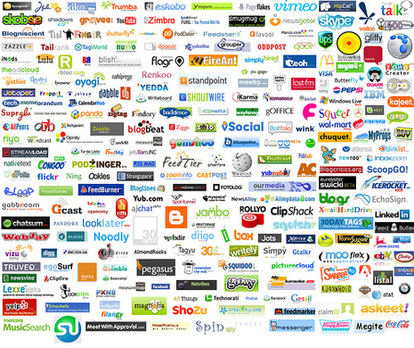 Social networking and media are now part of the fabric of society. It seems that billboards, commercials, newspaper ads, storefronts, sportscasts, news channels and even schools have some sort of reference to a social media site, such as Facebook or Twitter. The social media scene has exploded with newcomers in the past few years. The picture to the right is a sampling of some of the mediums in which users engage in social networking. Within the context of education there are a number of possibilities for using social networking and media.
Arora (2013) explains that social media has increased the number of ways in which students can engage in the social component of learning. Arora (2013) also argues that using social media can help bridge connections between students and their education by eliminating the need to be physically present. I think this is a trend that will continue to grow as mobile devices become more and more popular. Students themselves are also accustomed to always being connected. Therefore, having access to their schoolwork is something that naturally follows. However, there are also some drawbacks of using social networking with students. According to an online article, using social networking reduces learning and research capabilities, interferes with concentration, stunts communication and language skills and lowers motivation ("Negative Effects of Social Networking Sites for Students," 2012). Although some of the points raised may be valid, the arguments used to support them are unsubstantiated. For instance, it may be true that the development of language skills may be affected, but this is because of the nature of the content being presented. If students are asked the right kind of questions, and are given the adequate support and education then their writing can flourish. I think it is invalid to say that students' command over language is being diminished because of social networking sites-it is simply changing. Twenty years ago shorthand phrases, such as "lol" and "btw" were not being used. I think students are able to communicate more efficiently now, but are perhaps losing some of the depth and color language has to offer. When only 140 characters are available brevity is essential. This brings us to the use of Twitter within the classroom. Twitter is a medium of online communication that offers quick and easy information. These websites offers different ways in which twitter can be used by teachers:Twitter in the Classroom #1 Twitter in the Classroom #2Some of the ideas on the websites include: posting cultural and educational events, having a student post an inspirational quote tweet each day, creating a Twitter scavenger hunt, and following Twitter accounts that describe the lives and personalities of historical figures. I think that using Twitter in creative ways can help engage students and get them more interested in course content. It will also show students that modern communications technology can be used in the classroom as well and contribute to their learning. Another way to pique student interest via social media is through video sharing.
Sites such as YouTube offer ways to interweave audio and video information with social media. Heick (2012) offers 10 ways to incorporate YouTube into the classroom (How to Youtube your Classroom). Some of the key terms he uses are: brevity, diversity, humor and passive consumption. I think if it is used with an educational frame of mind YouTube can be a very powerful tool. Personally, I try to include YouTube videos into my class whenever I can. New formats such as Videographics offer intriguing ways of presenting information, rather than traditional forms of instruction. Using YouTube in the classroom also shows students that there are numerous educational videos on the site. Making connections between YouTube channels and users also offers students a chance to comment on videos and directly communicate with producers. Even though there are some dangers associated with YouTube, if it is presented in a safe and educational way I think the benefits greatly outweigh the potential costs. Overall, it is important to carefully select the social media platform that will enhancing learning. Although there are many benefits to using social media and networking it is also crucial to never overlook the safety and privacy of the students. Reinforcing the principles of digital citizenship and netiquette beforehand can alleviate many potential problems that made arise. Just as the list of social media sites continues to grow, so does the number of ways it can be successfully incorporated into the classroom. ReferencesFig 1. logos1.jpg. http://www.socialmarketingcompany.com/wp-content/uploads/2010/01/logos1.jpg. Retrieved on July 10, 2013. Arora, Keerti. (2013, April 9). Social Media in Education: Pros and Cons. Ed Tech Review. Retrieved from http://edtechreview.in/index.php/news/news/e-learning/268-socia-media-in-education-pros-consCrockett, Lee. 60 Inspiring Examples of Twitter in the Classroom. Retrieved from http://fluency21.com/blog/2013/02/19/60-inspiring-examples-of-twitter-in-the-classroom/Heick, Terry. (2012, July 14). How To YouTube Your Classroom. Retrieved from http://www.teachthought.com/technology/how-to-youtube-your-classroom/Miller, Samantha.. 50 Ways to Use Twitter in the Classroom. Retrieved from http://www.teachhub.com/50-ways-use-twitter-classroomNegative Effects of Social Networking Sites for Students (2012). Retrieved from http://performancing.com/negative-effects-of-social-networking-sites-for-students/ Relevant Comments: http://misspariseau.weebly.com/4/post/2013/07/social-media-in-the-classroom.html#commentshttp://missraychert.weebly.com/1/post/2013/07/journal-entry-4-communication-part-3.html#comments
 Using the Internet as a tool within the classroom can be a balancing act. Using it too much can detract students from learning, whereas too little might leave students yawning. However, for one teacher, using the Internet in the classroom is as easy as the ABC's. According to her website, Trails Optional, Jennifer Deyenburg has taught for ten years in Alberta and Scotland, and has recently completed her Masters in Education with a specialization in Information Technology Leadership at the University of Lethbridge. Although she has the credientials that go along with a technology guru, Jennifer also has a wealth of experience within the classroom as well. During her video interview Jennifer explains a number of different ways in which she incorporates the Internet into her classroom. I agree with Jennifer's point that the Internet can act as a gateway to learning opportunities outside of the classroom. I think that this feature is what makes education so unique from any other time in history. Resources, such as people and information, can be accessed by teachers and students through the use of technology, which can enrich and enhance learning and classroom experiences. However, Jennifer also mentions that the Internet acts as a two-way system. Information and ideas can also be shared by students and teachers, which allows for collaboration to take place. This notion can also be applied to how students interact with her blog. Jennifer mentions how some of her students already have ideas about what they will be doing that year, because of what she has posted in her blog. Jennifer puts the information out there and "brings the classroom to the students" before she even meets them. By doing this, students can see what she has to say and bring questions and comments into the real-world classroom. Typically, ideas about teachers takes place between peers or kin, but the Internet adds another dimension to the teacher-student relationship. I think using a blog is a great way to mentally prepare students for the year ahead, and provide background information. This can be particularly useful when starting at a new school, because it could ease some of the tensions students have about the unknown. In addition to her own blog, Jennifer also discusses class blogs. The use of blogs within the classroom provides students with opportunities to become part of an online community. Through blogs, students can share their ideas in an atmosphere where they don't have all the eyes in the class looking at them. Jennifer mentions how her use of blogs has evolved over the course of her teaching career. I think this will be the case for me as well. As new software and technology is developed so will my understanding and use of blogs. However, as Jennifer notes, protecting student privacy is essential. For instance, using only first names, not mentioning the town, and keeping sibling or friend names private are some of the guidelines Jennifer used with her class. I like how she said she developed these with her students as well, and is something I hope to do when I use blogs. Involving parents with the blogs is another great way to opening a channel of dialogue, and keeping them informed about what is going on in the classroom. Video conferencing is another tool that Jennifer uses in her classroom. She recalls a time when her and her class stayed up at night to video conference with people from around the world during the Olympics. I think that this a great example of how the Internet can enrich student learning and provide students with memorable school experiences. After watching this video I hope that one day my repertoire will be as rich as hers. Her use of the Internet within the classroom seems almost seamless. She has so many great strategies that will only continue to grow the more she continues to learn. This video also sparked some ideas for me, and provided me with examples of possible avenues to explore. The Internet is a valuable resource within the classroom, and plays an important role within the realm of education. References
Fig. 1. ebook3.jpg. Retrieved on July 10, 2013. From http://aceonlineschools.com/wp-content/uploads/2010/09/ebook3.jpg. Significant Comments:http://justinbechthold.wordpress.com/2013/07/10/technology-a-communication-tool-in-the-21st-century-classroom/#comments
http://summerschoolsalmon.weebly.com/1/post/2013/07/topic-4-even-more-communication.html#comments
 The ways in which we communicate with each other has drastically changed with the rise of the Internet. Sharing thoughts, ideas, feelings, photos and videos has probably never been easier than any other time in history. The new generation of learners have been born into this age of mass sharing, and are bringing their knowledge and experiences into the classroom. As a result, teachers need to be informed about the differences between 21st century learners and students of the past. Although there are many similarities, there are also some striking differences. According to Friesen and Jardine (2009) the old model of teaching that involves memorization and repetition needs to be replaced with one that encourages critical, analytical and creative thinking, as well as collaboration and teamwork. Modern forms of modern communication certainly make this possible in a number of ways. For instance, students are able to present information using mediums such as Prezi or Weebly, and colloborate with others using Google Docs. In addition to the concepts mentioned by Friesen and Jardin, Alberta Education also offers a model for 21 century learners. Alberta Education's model for 21st century learners involves lifelong learning and self-direction, digital literacy, social responsibility and cultural, global and environmental awareness. In general, I think their model accurately reflects what it means to be a 21st century learner. The importance they place on engaged thinking, entrepreneurial spirit and ethical citizenship are certainly worthwhile overarching themes. There is some controversy surrounding the inclusion of the term "entrepreneurial spirit,' but I believe that it belongs. The spirit of entrepreneurship involves self-motivation, passion and setting goals for oneself. These qualities are certainly important within the realm of education in the 21st century. With the rise of inquiry based and independent learning I think some aspects of the entrepreneurial spirit need to be present. Those who argue against having that term in the model suggest that it is tied with "profit" and the business sector, but this is not the case. Rather, within the context of education, the entrepreneurial spirit simply means being driven by an invisible force, and having the capacity to work for oneself. There are other parts of the model which deserve attention as well. I also agree that more specific categories within the model are essential to include. For instance, cultural, global and environmental awareness is essential for contemporary learners, because the issues surrounding those three areas are relevant and meaningful in today's society more than ever before. Being aware and informed about issues around the planet is vital for 21st century learners. One way to achieve this within the classroom is through the use of email. Email allows people to rapidly communicate with one another from around the world. Messages can be read and replied to in an instant, which has its advantages and disadvantages. Within the classroom there are a variety of ways to incorporate the use of emails to enhance student learning. Email can play an important role in how content is delivered to, and shared with, students. In my classroom I would use email to send out reminders about assignments, duplicates of assignments, notes about important dates, as well as study guides or links to useful websites. Also, through the use of ePals traditional learning activities, such as journaling and researching can be replaced. For example, in Social Studies, rather than looking up information about another country's culture, students could ask their epal. Similarly, in English or Language Arts, instead of writing a journal to themselves, students could email their epal about their thoughts or experiences. In Science classes, students could email an expert questions about the topic they are studying. Overall, the possibilities of email are plentiful. Blogs are another way in which the Internet can be infused into education. Blogs allow students to creatively express their thoughts and ideas with others. One of the benefits of blogs is that they can be created and edited outside of the classroom. Pictures, videos, diagrams and links can also be added to blogs to enhance their appeal. As a teacher, there are certain key ideas and strategies that can make blogging an effective tool within the classroom. Firstly, the importance of leaving a digital footprint needs to be explained to the students. Unlike pencil and paper, blogs are on the Internet, which means they can be accessed from around the world, depending on the privacy settings. Secondly, making a habit out of blogging is essential. It can be easy to start a blog, but keeping up with it and habitually adding content can be a challenge. Thirdly, modelling what effective commenting and blogging looks like by the teacher is vital. Instead of leaving comments like "cool" or "neat," describing what meaningful and quality comments are can be beneficial to students. Lastly, encouraging students to be creative will help motivate them to write in their blogs and make it interesting to view. Pictures and diagrams can help posts more engaging for readers. In conclusion, there are many ways to communicate information via technology. The Internet has allowed us to transmit and received thoughts and ideas at a pace never seen before. Within education, this can make learning more dynamic and engaging. From texting to emailing to blogs, both teachers and students are engulfed in the ever changing realm of communications technology. Thanks for reading. ReferencesFriesen, S., & Jardine, D. (2009). 21st century learning and learners. Prepared for Western and Northern Canadian Curriculum Protocol by Galileo Educational Network.Retrieved June 6, 2012 from http://education.alberta.ca/media/1087278/wncp%2021st%20cent%20learning%20%282%29.pdf
Fig 1 Modern_Social_Media_buttons_icons_metro_Ctrl-Alt-Design_001.jpg. July 8, 2013. Retrieved from http://ctrla.lt/wp-content/uploads/2013/03/Modern_Social_Media_buttons_icons_metro_Ctrl-Alt-Design_001.jpgSignificant Comments:
http://kmarraportfolio.weebly.com/2/post/2013/07/communication.html#comments
http://kayleemelhoff.weebly.com/3/post/2013/07/communication-in-education.html#comments
 With the explosion of information and data the internet has produced since its inception, finding specific details can be a daunting task at times. Often it can be overwhelming sorting through names, dates, theories, images, links, text and video. Also, because of its very nature, being able to separate fact from fiction is also extremely important. Researching is a process that sifts through information and allows users to take a journey on a path to what they are looking for. At times it can be frustrating, but with practice and helpful strategies, researching can be quick and easy. In terms of the Internet, Lawless and Kulikowich (1998) argue that there are three main types of learners: knowledge seekers, feature seekers, and apathetic hypertext users. I would classify myself as either a knowledge seeker or an apathetic hypertext user depending on my intentions for using the Internet, as well as my state of mind. When I have to write a paper or do an assignment my mind I become a knowledge seeker; looking for information about my topic and carefully reading the material. However, if it's a Sunday afternoon and I have some free time I become an apathetic hypertext user, with multiple tabs open, jumping around from site to site. As a teacher, I think this is why it is important to properly establish the framework for students before they engage in the research process before they begin searching. Teaching them about advanced search techniques can greatly help them to discover useful information and avoid the superficial. Often times when I use a search engine such as Google I will use quotation marks to limit my results. This is helpful for looking up particular phrases or key terms. However, I rarely use Boolean phrases, which is something I should do more, especially if it is something I want my students to be able to do. As Martzoukou (2008) explains, the majority of web users have underdeveloped research skills. This makes finding pertinent information problematic. Although this generation of students uses more technology than ever before, it is vital to show them ways to find what they are seeking in simple and effective ways. In order to encourage students to develop their research skills creating WebQuests or Internet Scavenger Hunts can help them become more comfortable with strategies for finding information. Also, providing a list of reliable websites or a quick reference guide for using search engines can also be effective. Furthermore, showing students the value of using more complex search strategies is an important students. One way to increase students motivation in this process is to show them the benefits of using complex searches. For instance, showing them how they can drastically limit the number of results by using Boolean phrases or quotation marks will translate to less links to choose from and more accurate results. Another way to help motivate students is to show them the advanced search in Google. In the advance search option students have the option to change the reading level of the results. When students see pages and pages of academic text when they open a link it is highly unlikely that they will carefully read through the page and find what they are looking for. However, by giving the students the choice to select the reading level between 'basic,' 'intermediate' or 'advanced' they can experience more success. This is one example of how teachers act as content curators for students. When teachers act as content curators they help guide in the right direction and keep them on track. They can help clarify information, and provide students with tools to engage in the research process themselves. Content curators are not there to feed students information, but rather to facilitate their learning and set them up for discovery. They should also be knowledgeable about the content itself, and have a set of tips or tricks for student that need it. However, teachers differ from content curators in terms of instruction and differentiation. Teachers need to be able to still instruct students about how to do certain tasks, and be able to recognize which students may need extra help or more of a challenge. It is also important to note that the way knowledge is accessed has changed in the past few decades. No longer do students need to go to the library to look up the tenth Prime Minister of Canada, because they answer is often a few clicks or taps away in their pocket. Research has been conducted about how the way memory has changed in the age of Google. Sparrow (2011) argues that where information can be accessed is becoming more important than the information itself, because of the reliance on search engines. I would agree with Sparrows findings because I think information nowadays is so easily accessible that it is simply a matter of location and time before it is found, not a question of 'if.' Sparrow's findings also reminds me of Bloom's taxonomy. With the use of search engines the first level (knowledge) can be easily found. Students can quickly look something up, which allows them to engage in some of the higher levels of thinking, such as application and analysis. However, because finding data and information is so accessible, there is less of a reliance on memory, which is what Sparrow argues. Nevertheless, just because information and data can be easily accessed does not mean that students will not be able to remember some of it. And even if they do not, they know where to look, which is what research is all about. ReferencesFig. 1 Ropo.jpg. July 5, 2013, from http://blog.gannettlocal.com/Portals/162877/images/ropo.jpgLawless, K. A., and Kulikowich, J. M., (1998). Domain Knowledge, Interest, and Hypertext Navigation: A study of individual differences, Journal of Educational Multimedia and Hypermedia, 7(1), 51-69Sparrow, B., Liu, J., and Wegner, D.M. (2011) Google effects on memory: Cognitive consequences of having information at our fingertips. Science, 333: 776-778.
Significant Comments:
http://ed4764blog.weebly.com/1/post/2013/07/topic-1-researching.html#comments
http://ed4764muirhead.weebly.com/1/post/2013/07/research.html#comments
|







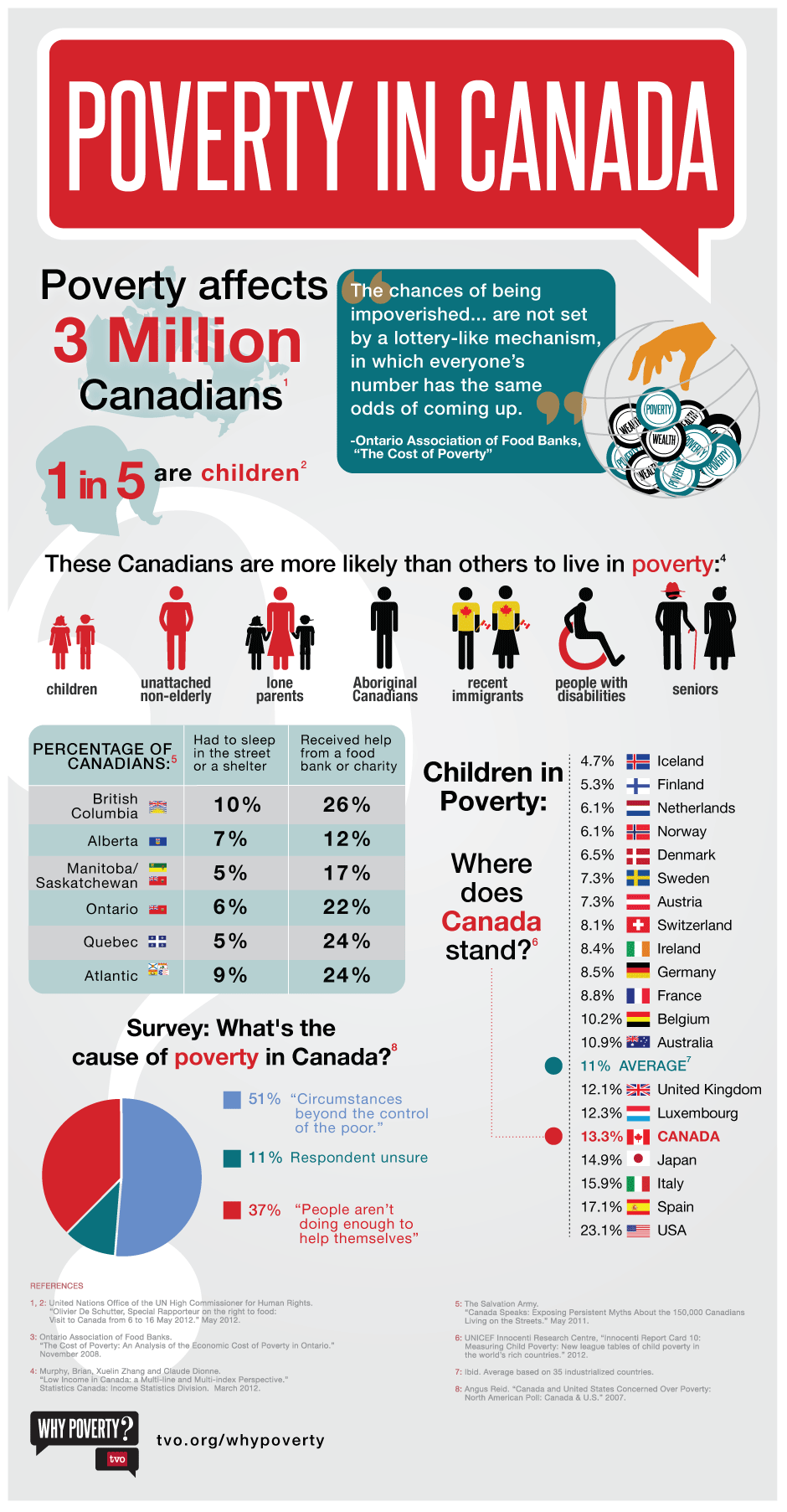




 RSS Feed
RSS Feed